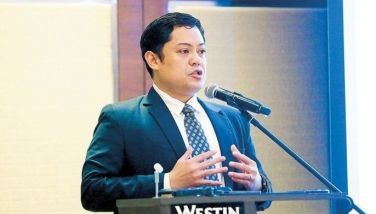Whole day parking
I'm spending so much time in Manila I thought I might as well write about my experiences there. Talking about Dan Brown's “Inferno†was easy enough - most of his “fictitious†character's observations, related to calling Manila as the “gates of hell†were all grounded on basic observations, albeit grossly exaggerated. But the main value of analyzing Manila, especially its traffic, is that, it gives us a sense of what Cebu will be like, if we don't act now.
The more that I stay in the capital, the more real Enrique Peñalosa's words have become. “Before we can decide what kind of transport system to have, we need to know what kind of city we want; and in order to know what kind of city we want, we have to know how we want to live, for really a city is simply a means to a way of life.†People go to work everyday and go home at night (generally), and the ordeal one has to endure daily in the way to work and homeward bound, is a significant matter on the kind of life one has. Especially when it floods!
And it cuts across the social strata - the rich, the poor, the middle class, and the sub-divisions in-between. Except if you can afford a daily helicopter ride, the high and the mighty has to endure the traffic jams. The less privileged and even those who are a little better off has to squeeze themselves in the overcrowded MRT/LRT and the dangerous buses and jeepneys. Those who can afford to buy cars suffer the snail-paced traffic and worry on parking.
I took a taxi in going to work at 7:30 am last week - I could have walked but I was running late. We saw a long line of cars going into the SM Megamall so I asked the driver what was the occasion. “None, sir,†he answered, “they're going to park there.†“The whole day!?,†I unbelievingly ask, and he said, yes, they'll park the whole day, and added that it cost them only P45, and then they will either take the taxi or the MRT to where they actually work! And he added, “it's the cheapest, sir, if they park in Makati, it may cost them P100-120 a day!â€
Here's the dysfunction - people have to pay more, and go to more convoluted ways of going to work. The public transport system is no sufficient enough, and not extensive enough to afford one to use it daily and walk a little bit to work. And it's a jungle out there in the stations during rush hours, where the men trample less able men, the women and the children and the elderly, each simply needing to get back home. Some ride by bus but it's neither that appealing also. So everyone wish they could earn enough to buy themselves a car.
Someone once joked in my class, what's the difference between an average Filipino family and an average American family. Well, the Americans, once they get enough money or could get a loan, buy themselves a house. The Filipino will buy a car! In fact, most families buy the car first before eventually buying a house, and leaving the car parked overnight in front of the rented apartment, to add to the congestion of the already jammed little street! So you toil to buy a car, only to find out you have nowhere to park it when you drive to work and you have to shell out a hundred bucks to park it in a mall. Then you still have to take the taxi or the MRT to work. That's after enduring the bumper-to-bumper morning and evening traffic jam.
The train and the expressways which are supposed to transport you over longer distance become a curse. These infrastructures induce people to live farther away from their places of work, but they eventually get jam-packed. It does not matter how many roads you build or how wide you build them - they will be filled to their capacity, especially with cars. It's one of the more basic truths in transport science - capacity generates traffic, and if you don't have a more convenient form of public transportation, it induces even more car use!
All things point out to the provision of an efficient, comfortable, convenient, and affordable, public transportation as the key to the impasse. But even that is thwarted by, again, the convoluted thinking that public transportation should be cheap. Affordable, yes, but not cheap or you get those trains packed like sardines. You need to recover the high cost of the infrastructure through the fare, but people resist any fare increase, especially in Manila. So they continue to think they deserve being subsidized almost P2,000 a month per passenger while Filipinos in the rest of the country can only hope they have a better ride than yesterday. (to be continued)
- Latest





















